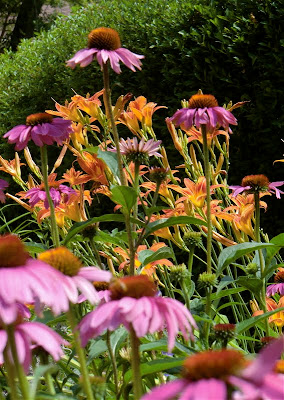Everyone has seen those bare spots under pine trees. Do you wonder why? Perhaps you have heard that nothing likes to grow in such acidic soil. The needles are thick under these trees. They must just make the soil too acidic for anything to want to live there. That’s what I thought.
Recently, I took an on-line class given by Dr. Tony Koski, professor at CSU and Extension Turfgrass Specialist. I learned that our soil here in Colorado is very high pH--free lime. Although pine needles fall in abundance, there could never be enough pine needles to lower the pH. Fallen needles may SLOWLY make the soil more acidic, but more likely for the better since it neutralizes the lime. It takes decades to change pH and will not decrease by more than .5 units. There goes that myth!
I lied. Sorry!
4 days ago















